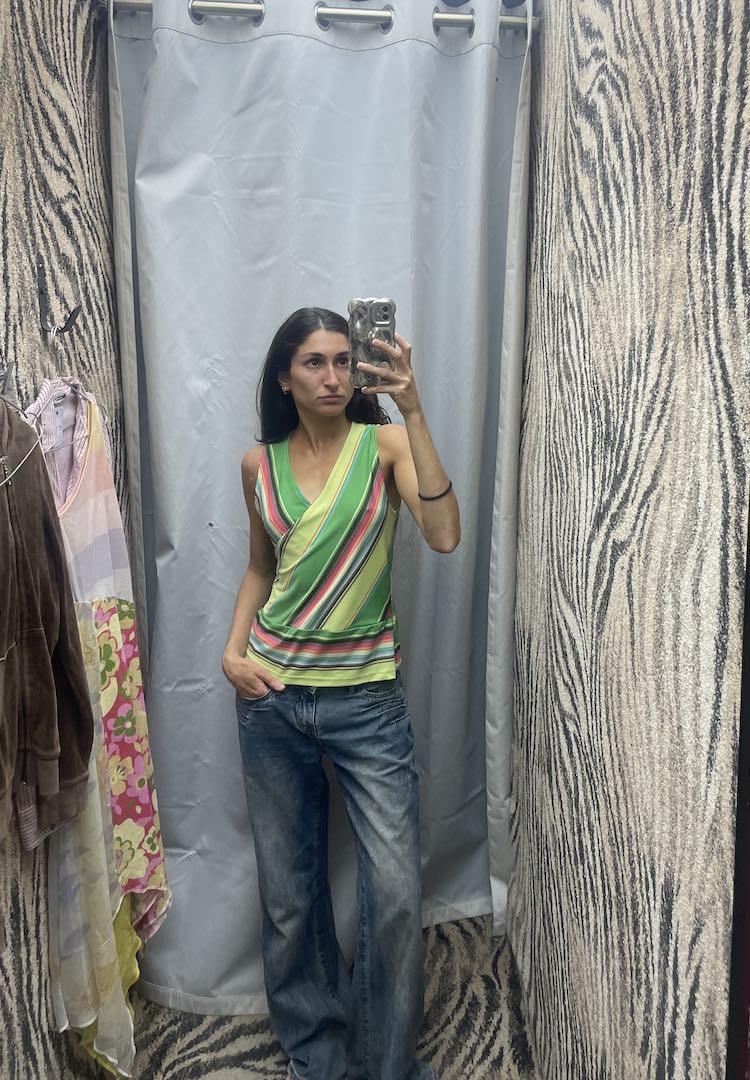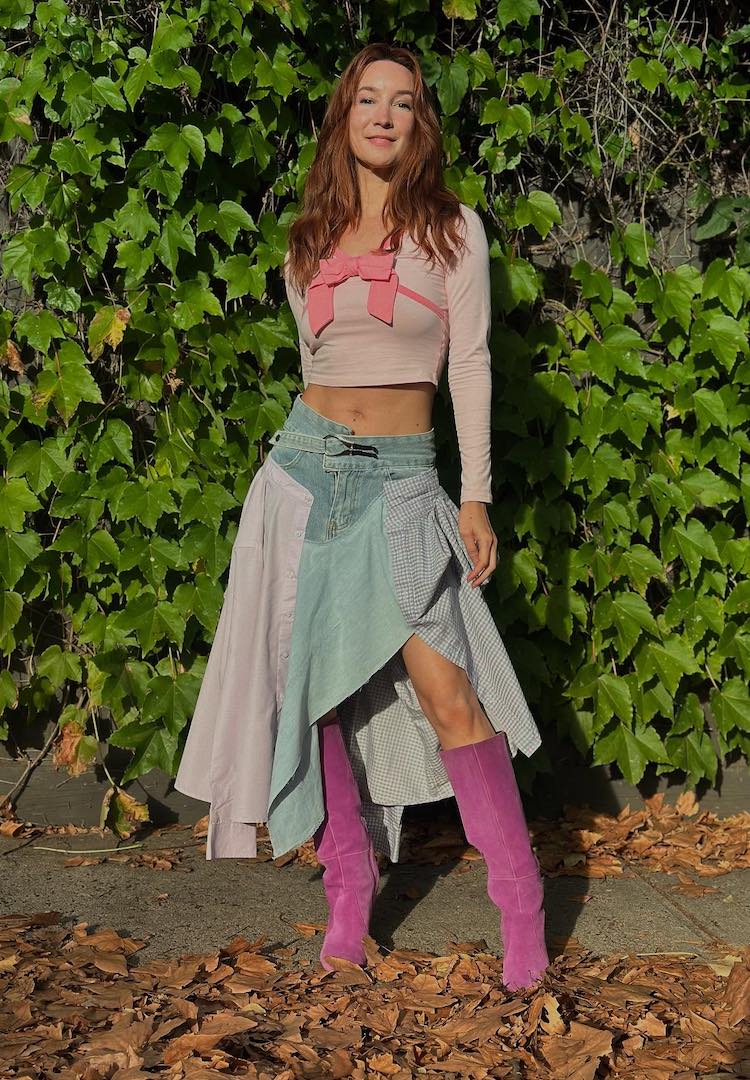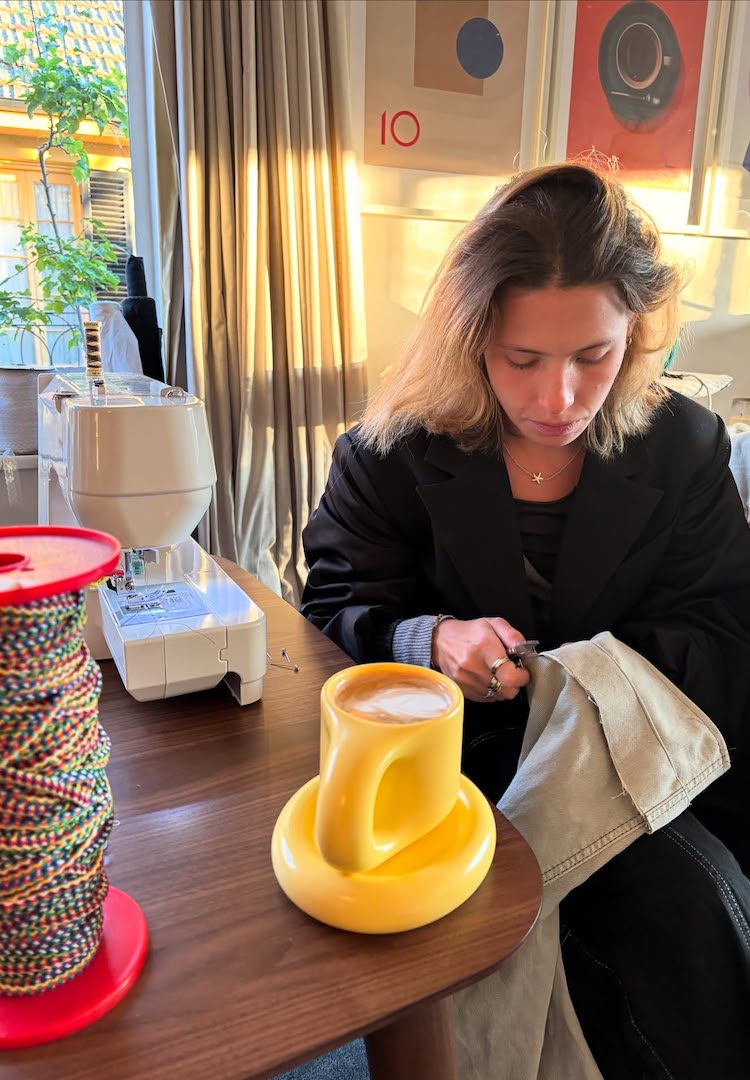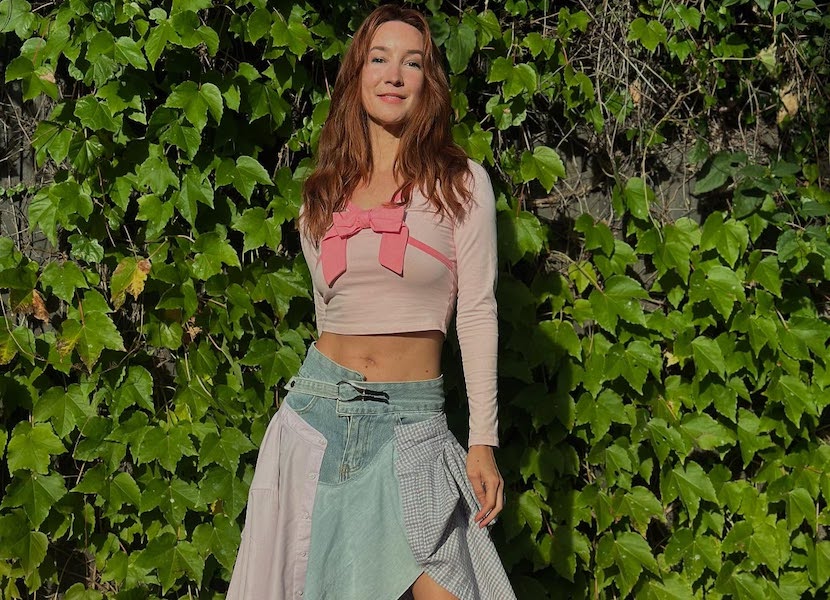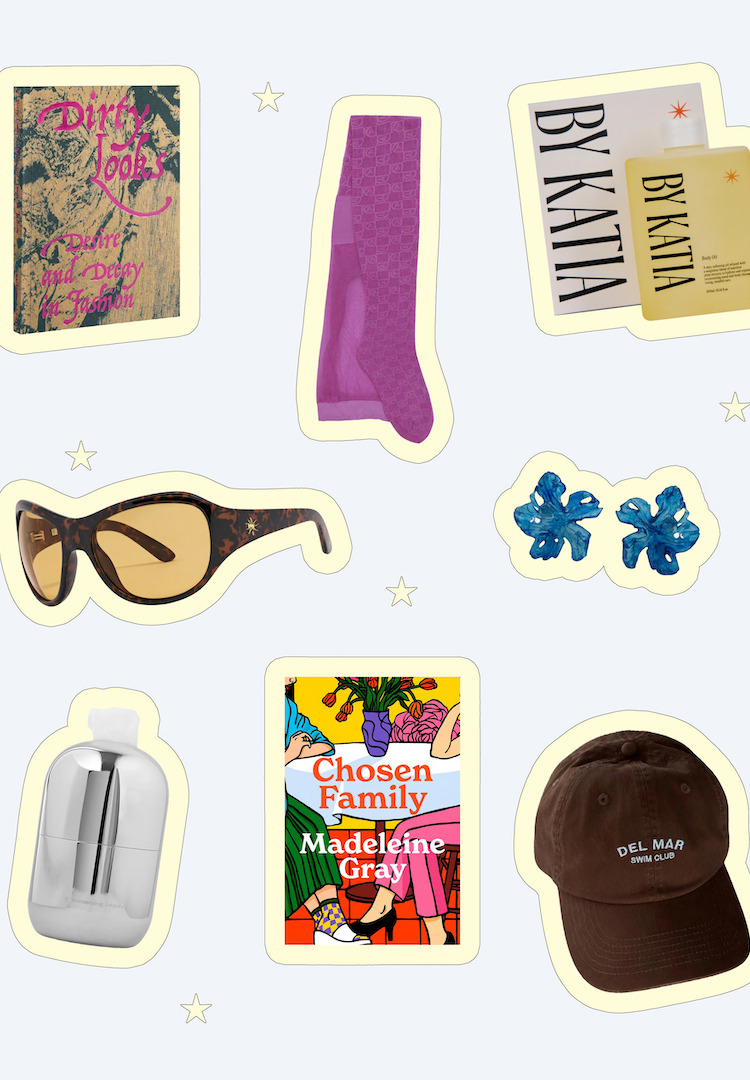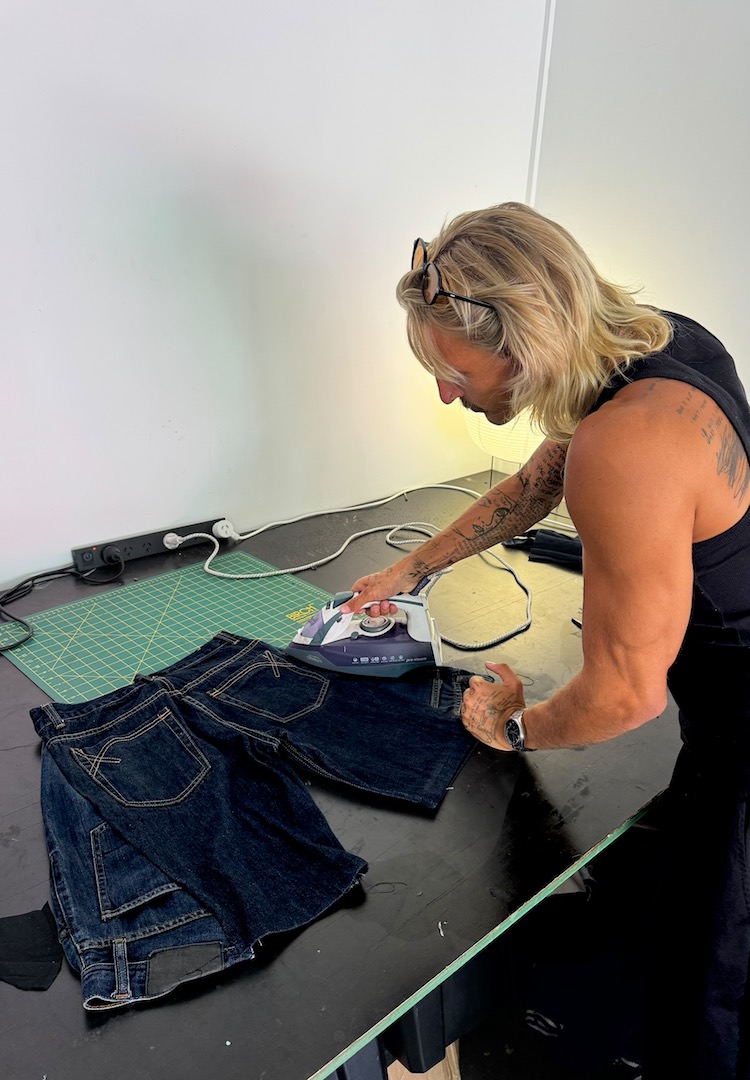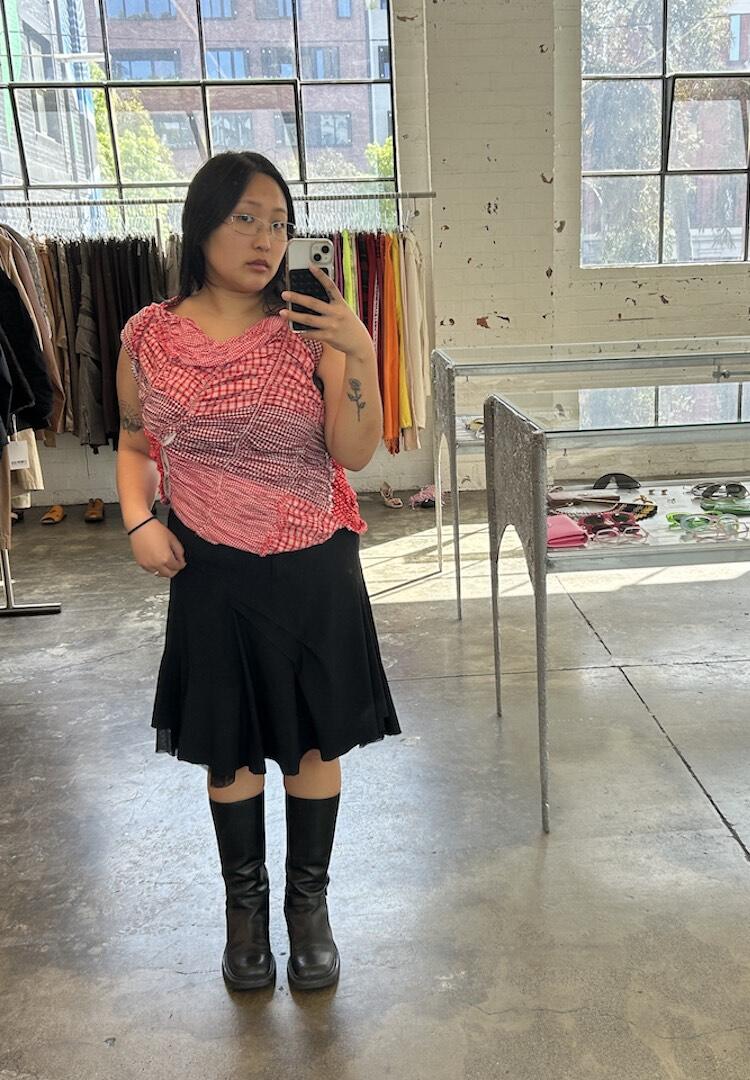How to deconstruct and repurpose every last part of your old jeans
photography by @bowe.fashion/INSTAGRAM
as told to daisy henry
A step-by-step guide to upcycling denim.
Denim is one of the most durable fabrics in our wardrobes. While proper washing will extend its lifespan, denim’s thick weave and high density makes it more tolerant of wear and tear than most other wardrobe items.
That said, jeans don’t always stand the test of time. What once felt essential to own, like skinny jeans or a distressed boyfriend cut gradually feel less representative of your personal style. In those moments, rather than adding to landfill, we suggest having a go at upcycling your old clothes.
For more pre-loved fashion advice and stories, head to our Pre-Loved section.
Designer and founder of Bowe Fashion, Erica Bowe, is one of our favourite resident upcyclers. Erica specialises in transforming pre-loved clothing into new, reimagined pieces. She’s turned ski jackets into pants, a button-up shirt into a dress and old denim into a patchwork trench.
Given denim is such a staple, we asked Erica what she would do if she had an old pair of jeans she no longer wore. Naturally, nothing goes to waste. From the waistband, to the pockets, Erica shares four ways to use different parts of your denim, and how to rework them into new projects.
The waistband
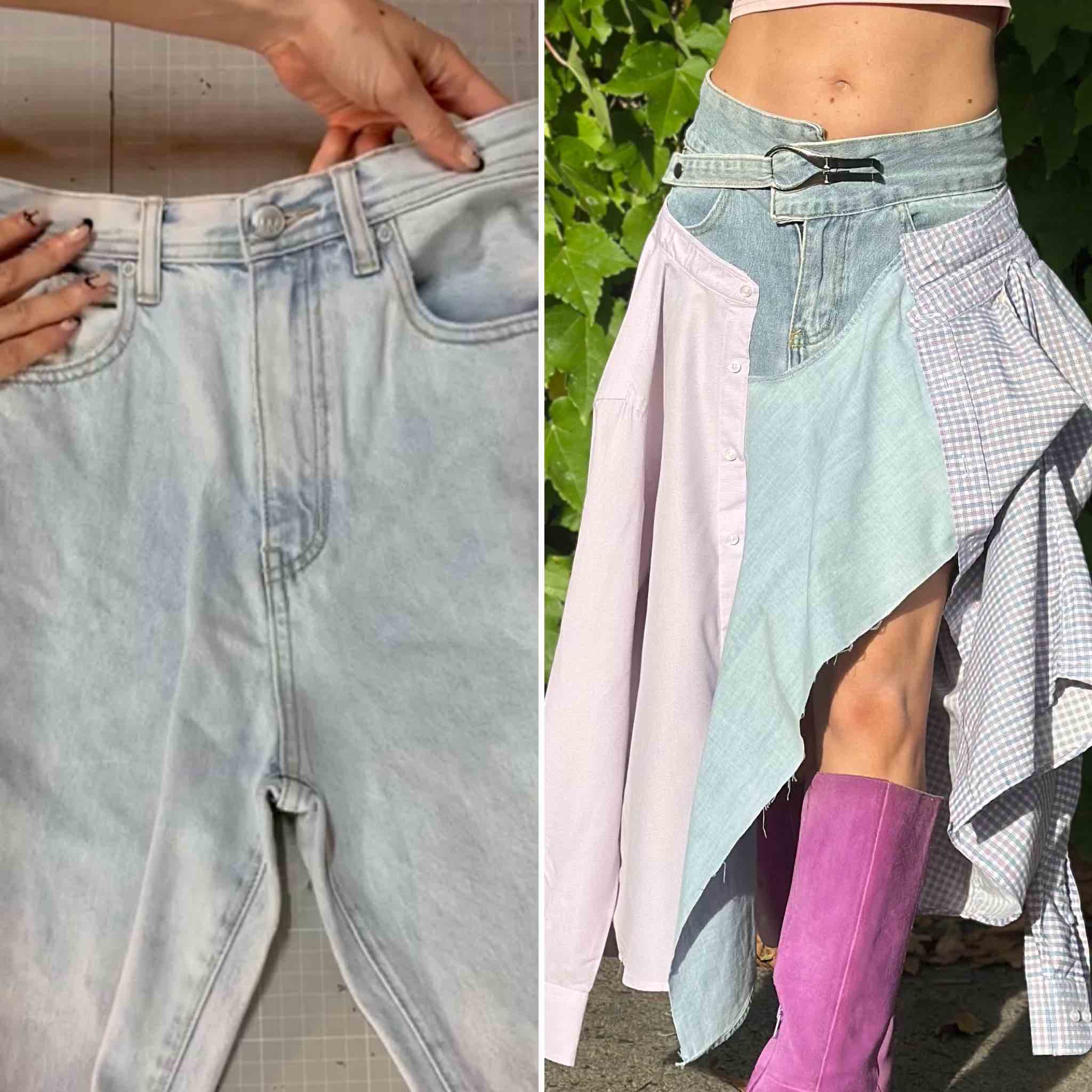
The waistband of an old pair of jeans is a great foundation for a new skirt of pair of pants. To start, choose a pair of jeans that fits you well and has a waistband you love.
Then, cut off the legs and set them aside (they’ll be perfect for another upcycled project). Keep the original button, zip, pockets and waistband intact. This will serve as the perfect base for your new design.
Pockets
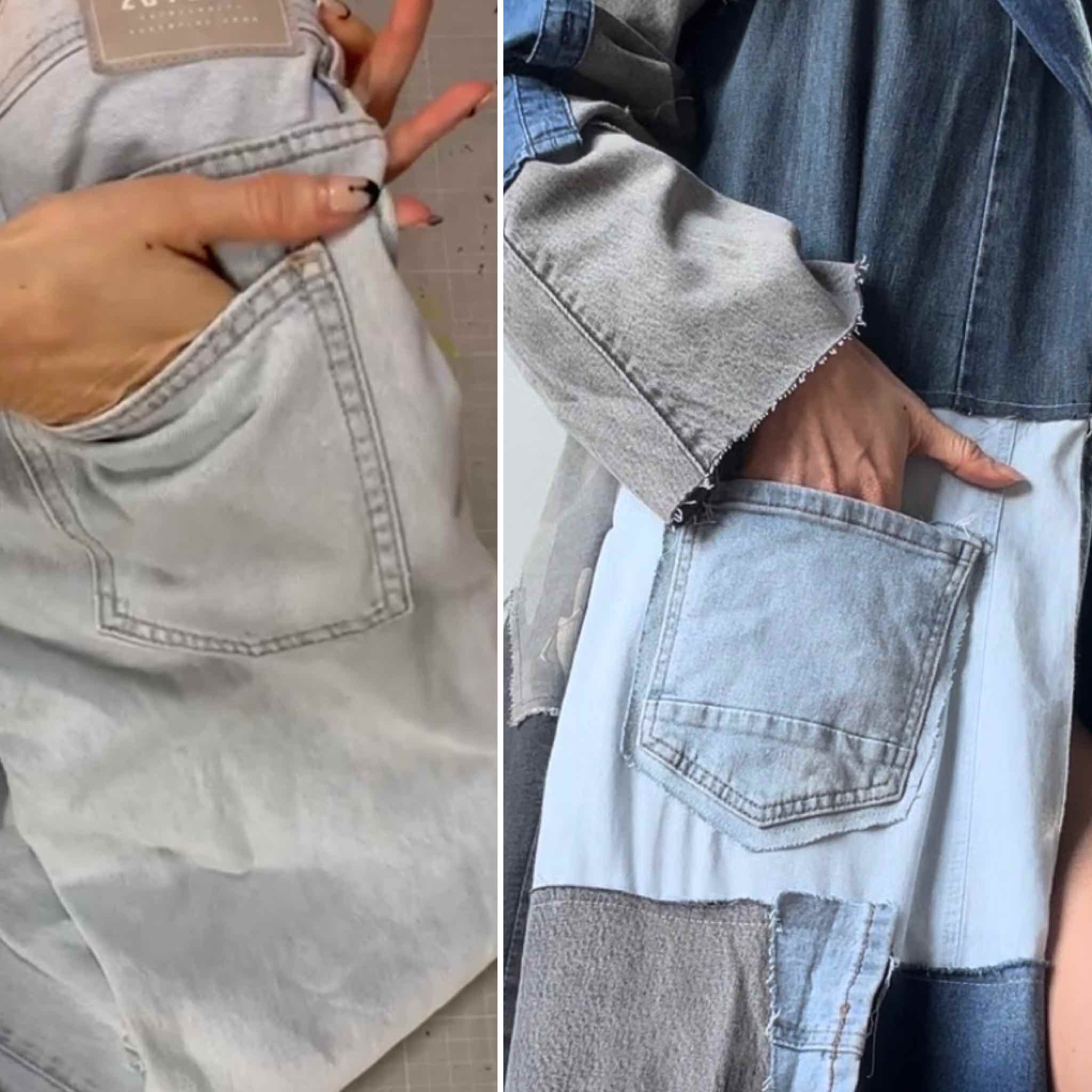
Pockets bring both personality and practicality to your design. Cut them out carefully, leaving about one centimetre of fabric around the edge for seam allowance.
Sew them around the full perimeter onto your new garment, whether on the front, back or even on the sleeves, for a ready-made pocket you didn’t have to construct from scratch.
Legs
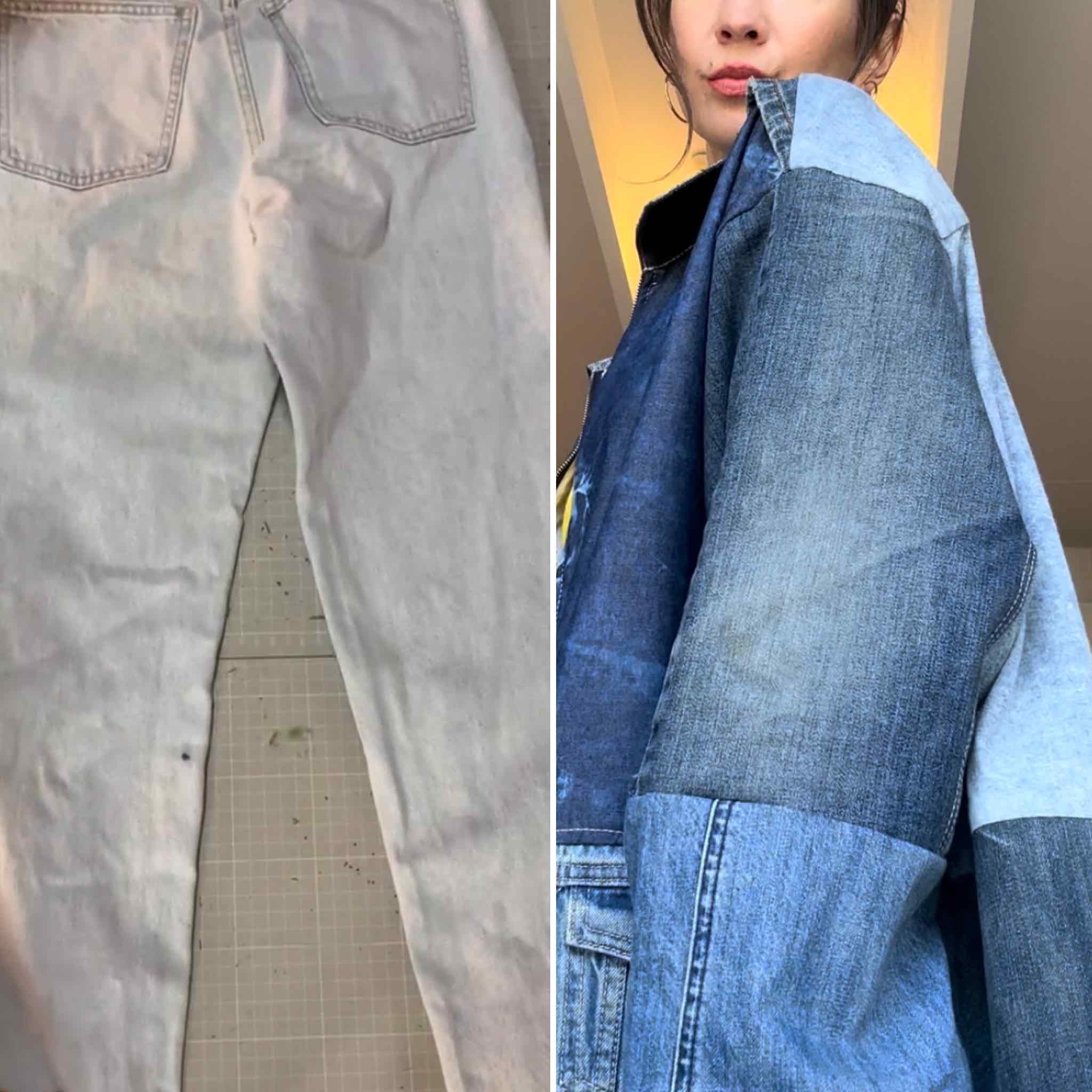
The legs provide the largest, most versatile sections of fabric. Repurpose them into sleeves, panel or parts of a top, jacket or bag. Keep as much length as possible to give yourself more to work with. Cut along the seams if you need to flatten or reshape the fabric.
Distressed material
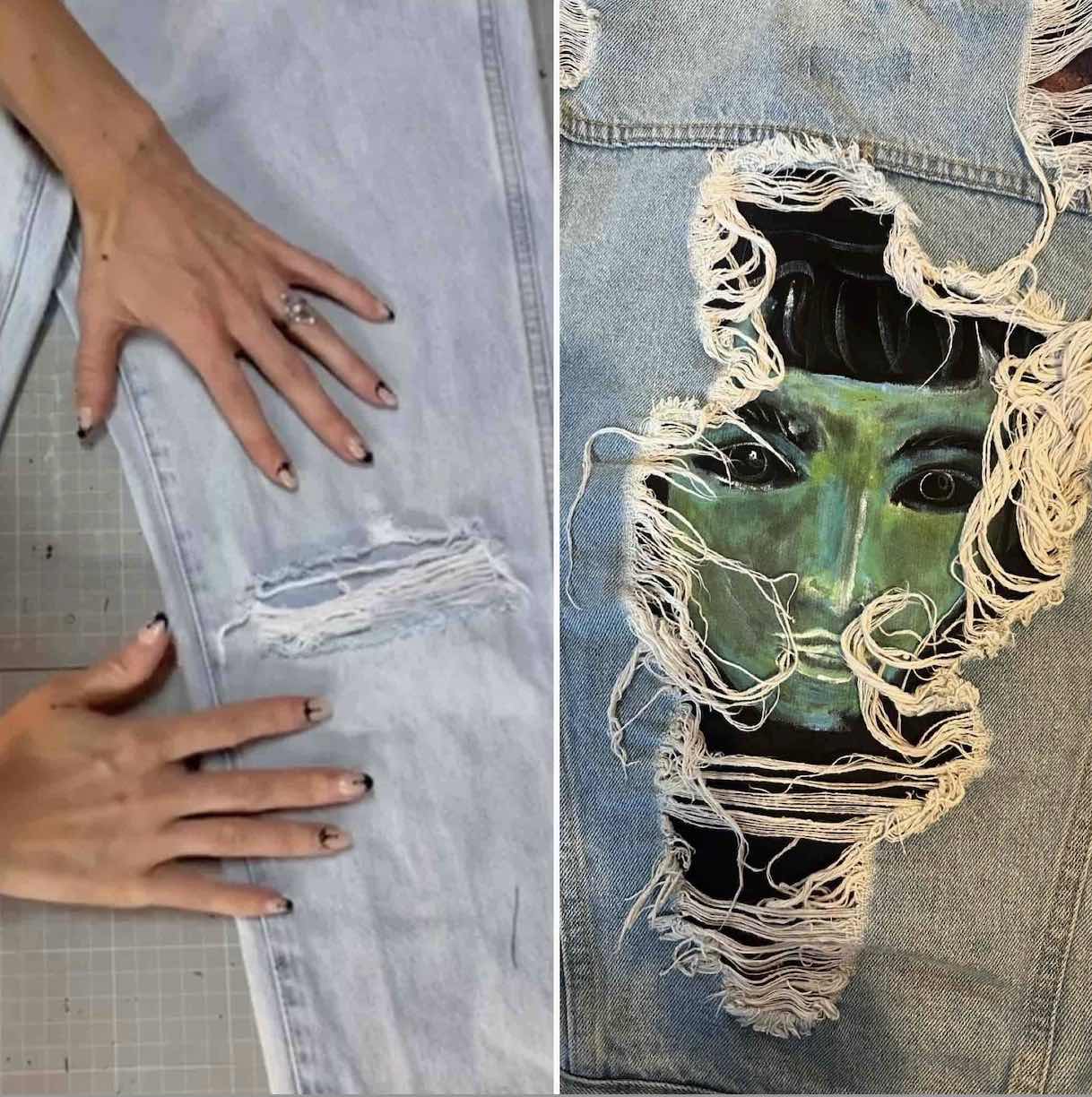
Distressed areas can become powerful design features. Start by cutting along the seams to open them up into flat, usable panels. Embrace the frays, fades and holes – these details add character and texture. Let the uniqueness of each piece inspire unexpected ideas in your next design.
For more on secondhand fashion, try this.

